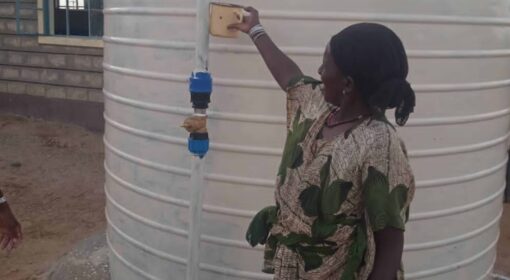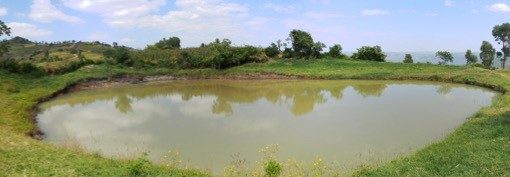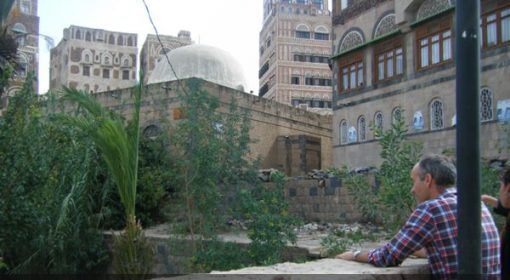Posted by Martin van Beusekom and Linda Navis
June 18, 2013
Water shortage is key problem for the citizens of Yemen’s capital Sanaá. Annual rainfall averages 200 mm and normally does not exceed 250mm. Of that, the fraction that is effective rainfall is even lower. As the water precipitates through short intense showers, it is diverted though urban and semi-urban wadi systems (multifunctional roads) to local depressions. Although these depressions are also beneficial for recharge of groundwater and used as irrigation reservoir for Sanaá’s urban agriculture (growing radice, rucola and onions; around the Big Mosque for example), the water is lost (as grey water) for domestic uses. Only by pumping the water up again, which is costly, could the water be directed towards domestic uses.
In order to tackle this problem, Dr. Sharaff of the WEC (Water and Environment Center) initiated pilot projects with two primary schools to teach them to harvest and store rainwater off the roofs of a typical school building, see image below. The school board’s interest was to have water access in case of a break-down of the public system, and to save money on the water bill.

The 360 m2 iron sheet covered roof of the primary school used for water harvesting.
Technical considerations
The rain water harvesting system was adapted for Sanaa’s local conditions. For instance, to get rid off the dust accumulation on the roof and maintain water quality in the reservoir, an easy operational first flush system was developed. In order to use the water to flush toilets, it is pumped up to the roof using a simple motor and stored there.


Generally it is recommended to flush away the first 5% of the water collected during a rainfall (In Sana’a this should be taken as the first 3 minutes after it starts to rain). The first showers contain much dust and atmospheric pollution (from industry, cars and mini-buses). Both for water quality reasons and to prevent fast sedimentation of the reservoir, the first flush is removed from the system. During the first two minutes the valves at the vertical standpipes along the building will be opened at the bottom (see image above on left). After this, the valves will be closed so that vertical pipes will fill themselves and provide water to the horizontal pipe, attached 2 meter above ground level (see image above on left). All water accumulated this way will pass through one central valve (see image above on right) before entering the water reservoir. The manhole of this central valve will steadily fill with sediments and needs to be emptied from time to time.
 |  |
| Small electric driven pump taking water from the underground 100 m3 reservoir to the roof reservoir. | The 100 m3 underground reservoir, with roof cover (protecting from evapotranspiration and precipitation of dust and atmospheric polluted substances). The reservoir also has an outlet to prevent cracking of the sidewalls when pressure builds up. The excess water is used for a tree garden. |
{jcomments on}



